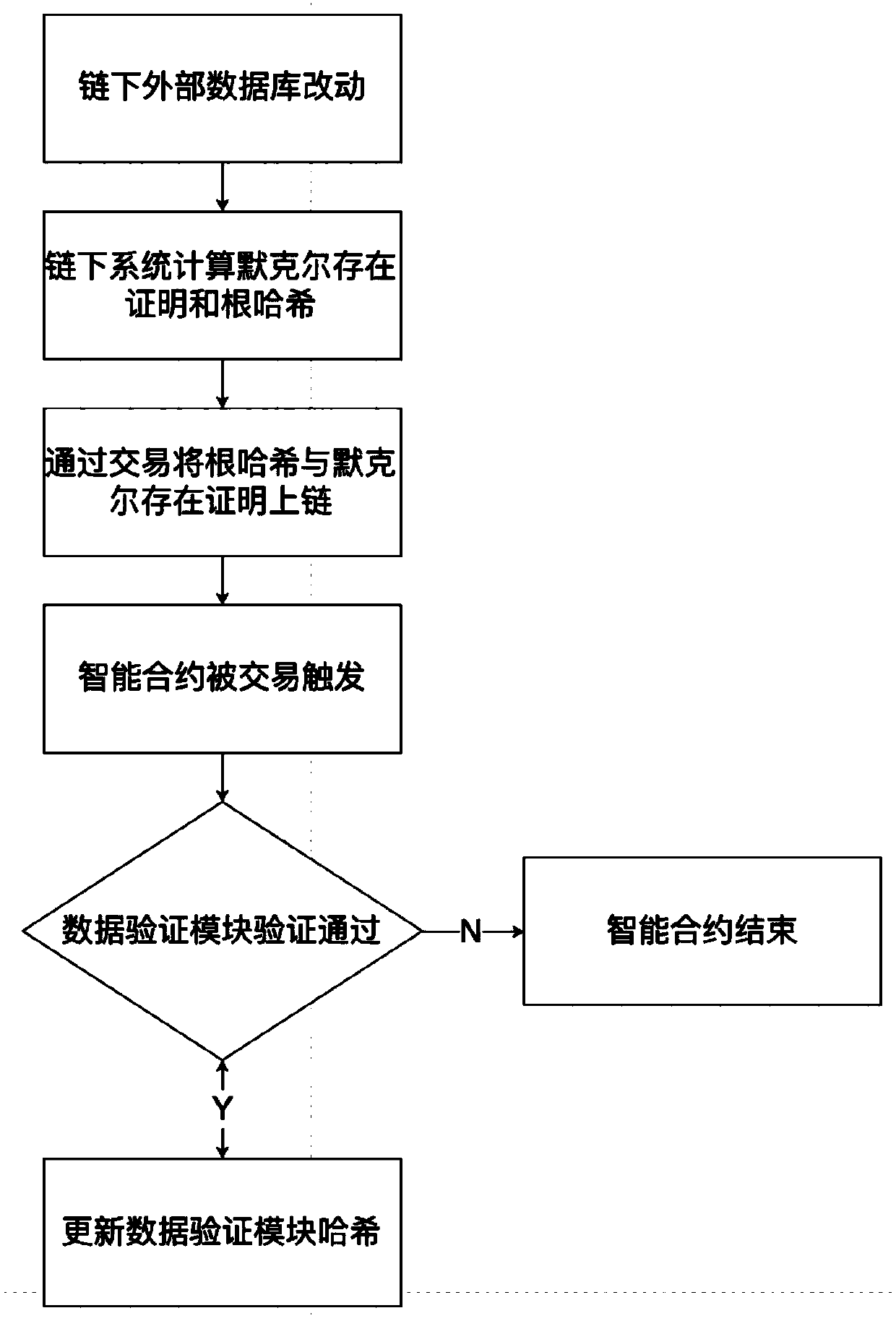Method and system for anchoring trustable external database by blockchain intelligent contract
A smart contract and database technology, applied in the blockchain field, can solve problems such as large-scale applications that are difficult to carry massive amounts of data, limit the depth of data processing, etc.
- Summary
- Abstract
- Description
- Claims
- Application Information
AI Technical Summary
Problems solved by technology
Method used
Image
Examples
Embodiment 1
[0025] Example 1 (insert data)
[0026] Such as figure 1 and figure 2 As shown, a method for anchoring a trusted external database with a blockchain smart contract includes the following steps:
[0027] S1: Initialize and compile the smart contract, put the smart contract on the chain, and strip the data of the smart contract from the storage space of the smart contract, store it in any type of off-chain database, obtain the off-chain external database, and initialize the off-chain external database;
[0028] S2: Initialize the smart contract data verification module on the chain. When the smart contract initialization is completed, add a 64-byte hash to represent the Merkle tree of the external database under the chain mapped by the smart contract in the persistent storage layer of the smart contract root hash;
[0029] S3: When data is inserted into the smart contract, after inserting the data to be inserted into the external database under the chain, calculate the Merk...
Embodiment 2
[0030] Example 2 (delete data)
[0031] Such as figure 1 and figure 2 As shown, a method for anchoring a trusted external database with a blockchain smart contract includes the following steps:
[0032] S1: Initialize and compile the smart contract, put the smart contract on the chain, and strip the data of the smart contract from the storage space of the smart contract, store it in any type of off-chain database, obtain the off-chain external database, and initialize the off-chain external database;
[0033] S2: Initialize the smart contract data verification module on the chain. When the smart contract initialization is completed, add a 64-byte hash to represent the Merkle tree of the external database under the chain mapped by the smart contract in the persistent storage layer of the smart contract root hash;
[0034] S3: When there is data that needs to be deleted from the smart contract, after deleting the data to be deleted in the external database under the chain, ...
Embodiment 3
[0035] Embodiment 3 (calling data)
[0036] Such as figure 1 and image 3 As shown, a method for anchoring a trusted external database with a blockchain smart contract includes the following steps:
[0037] S1: Initialize and compile the smart contract, put the smart contract on the chain, and strip the data of the smart contract from the storage space of the smart contract, store it in any type of off-chain database, obtain the off-chain external database, and initialize the off-chain external database;
[0038] S2: Initialize the smart contract data verification module on the chain. When the smart contract initialization is completed, add a 64-byte hash to represent the Merkle tree of the external database under the chain mapped by the smart contract in the persistent storage layer of the smart contract root hash;
[0039] S3: When a smart contract needs to use data that already exists in an external database under the chain, the original data of the data and the sibling...
PUM
 Login to View More
Login to View More Abstract
Description
Claims
Application Information
 Login to View More
Login to View More - R&D
- Intellectual Property
- Life Sciences
- Materials
- Tech Scout
- Unparalleled Data Quality
- Higher Quality Content
- 60% Fewer Hallucinations
Browse by: Latest US Patents, China's latest patents, Technical Efficacy Thesaurus, Application Domain, Technology Topic, Popular Technical Reports.
© 2025 PatSnap. All rights reserved.Legal|Privacy policy|Modern Slavery Act Transparency Statement|Sitemap|About US| Contact US: help@patsnap.com



